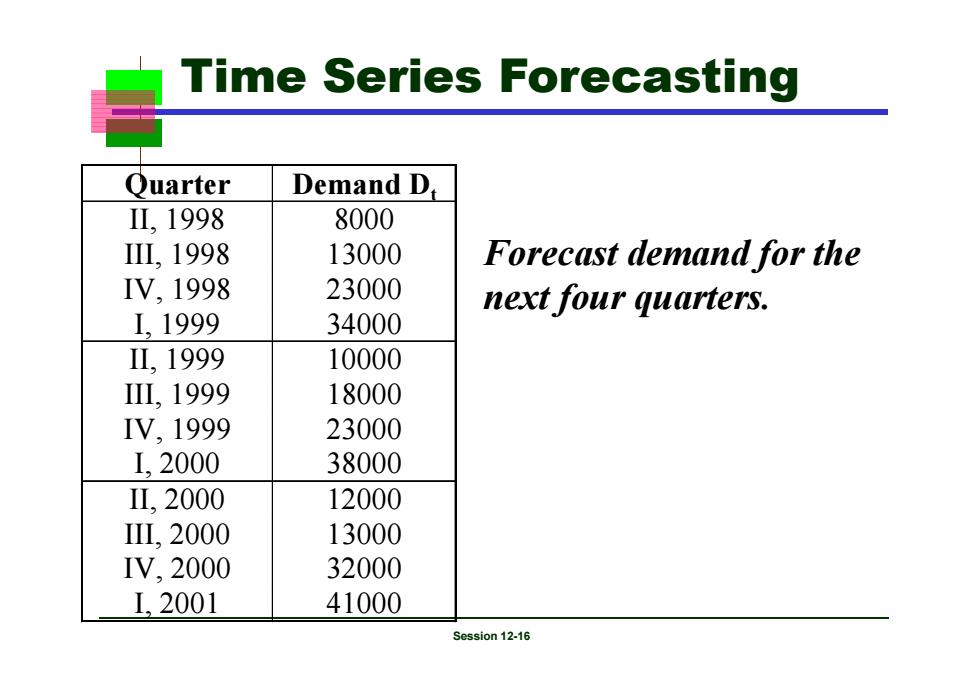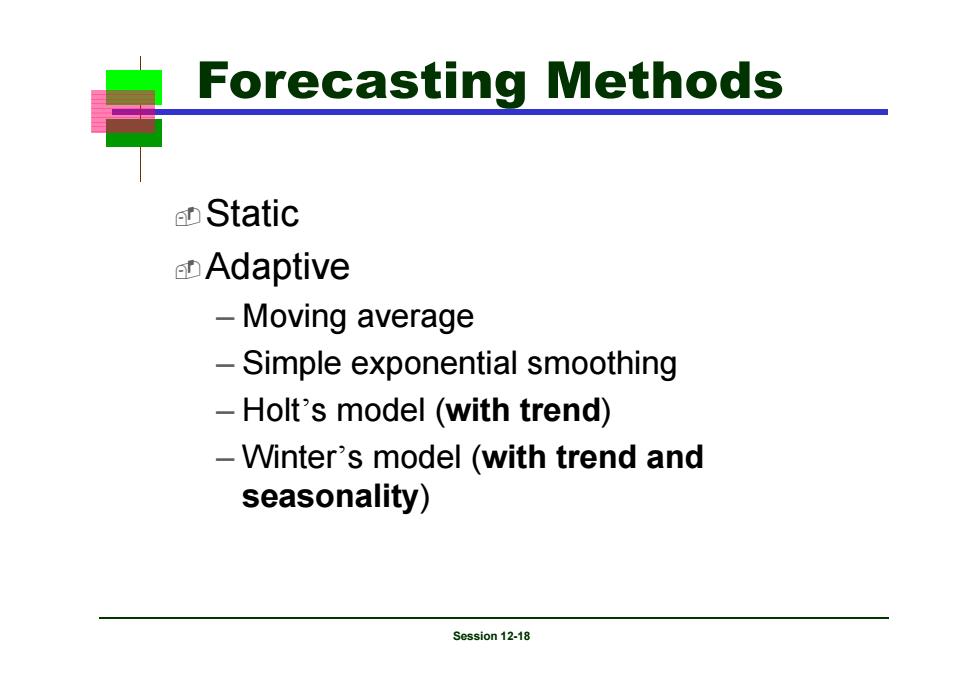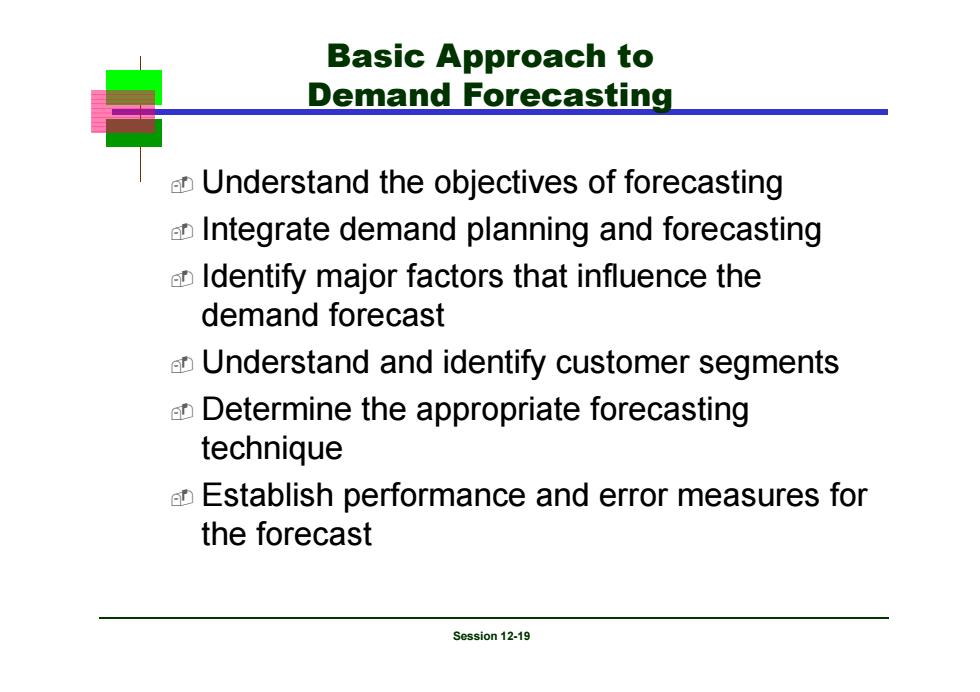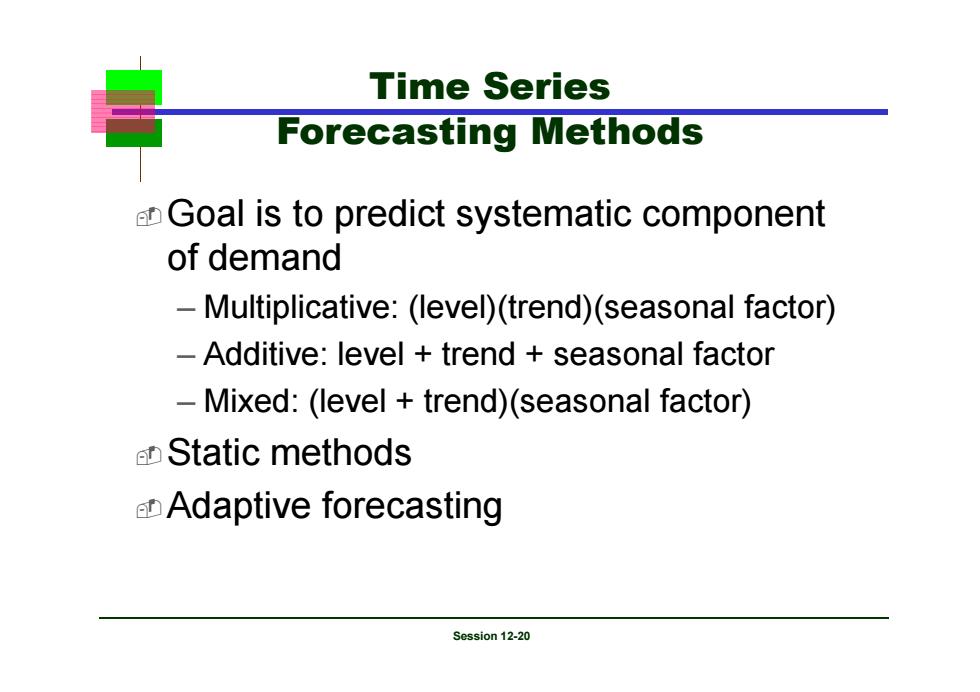
Time Series Forecasting Quarter Demand D, IL,1998 8000 IⅡ,1998 13000 Forecast demand for the IV,1998 23000 next four quarters. L,1999 34000 IⅡ,1999 10000 IL,1999 18000 IV,1999 23000 L,2000 38000 Ⅱ,2000 12000 L,2000 13000 V,2000 32000 L,2001 41000 Session 12-16
McGraw-Hill/Irwin Session 12-16 Time Series Forecasting Quarter Demand Dt II, 1998 8000 III, 1998 13000 IV, 1998 23000 I, 1999 34000 II, 1999 10000 III, 1999 18000 IV, 1999 23000 I, 2000 38000 II, 2000 12000 III, 2000 13000 IV, 2000 32000 I, 2001 41000 Forecast demand for the next four quarters

Time Series Forecasting 50,000 40,000 30,000 20,000 10,000 0 97,2 ,3 992 001 Session 12-17
McGraw-Hill/Irwin Session 12-17 Time Series Forecasting 0 10,000 20,000 30,000 40,000 50,000 97,297,397,498,198,298,398,499,199,299,399,400,1

Forecasting Methods Static Adaptive Moving average -Simple exponential smoothing -Holt's model (with trend) -Winter's model(with trend and seasonality) Session 12-18
McGraw-Hill/Irwin Session 12-18 Forecasting Methods Static Adaptive – Moving average – Simple exponential smoothing – Holt’s model (with trend) – Winter’s model (with trend and seasonality)

Basic Approach to Demand Forecasting an Understand the objectives of forecasting p Integrate demand planning and forecasting Identify major factors that influence the demand forecast n Understand and identify customer segments Determine the appropriate forecasting technique Establish performance and error measures for the forecast Session 12-19
McGraw-Hill/Irwin Session 12-19 Basic Approach to Demand Forecasting Understand the objectives of forecasting Integrate demand planning and forecasting Identify major factors that influence the demand forecast Understand and identify customer segments Determine the appropriate forecasting technique Establish performance and error measures for the forecast

Time Series Forecasting Methods Goal is to predict systematic component of demand -Multiplicative:(level)(trend)(seasonal factor) -Additive:level trend seasonal factor -Mixed:(level trend)(seasonal factor) Static methods Adaptive forecasting Session 12-20
McGraw-Hill/Irwin Session 12-20 Time Series Forecasting Methods Goal is to predict systematic component of demand – Multiplicative: (level)(trend)(seasonal factor) – Additive: level + trend + seasonal factor – Mixed: (level + trend)(seasonal factor) Static methods Adaptive forecasting